Call to check dates before you go
Lord Stirling - Sir William Alexander: Hero of the American Revolution
Early Days
William Alexander was considered male heir to the Scottish title of Earl of Stirling through Scottish lineage (being the senior male descendant of the paternal grandfather of the 1st Earl of Stirling, who had died in 1640), and he sought the title sometime after 1756. Raised on Broad Street in Lower Manhattan, he decided to move west to the country. He chose Basking Ridge, NJ and became the area’s most famous resident.
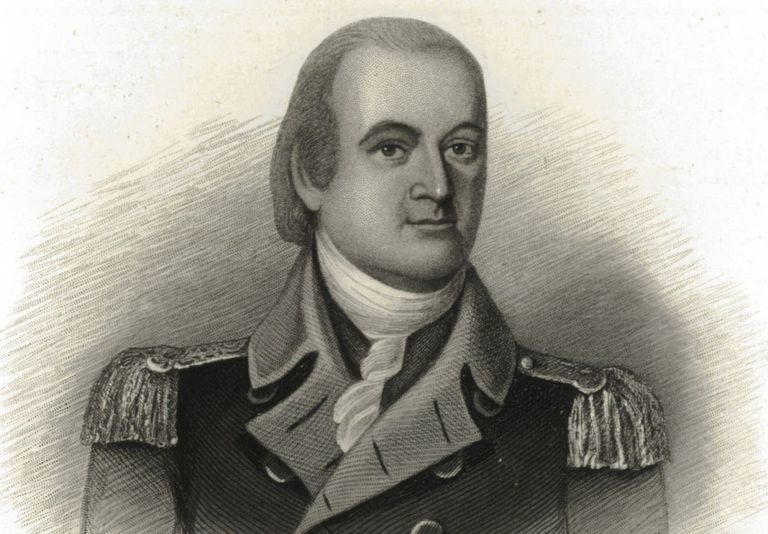 Lord Stirling ~ Sir William Alexander: Hero of the American Revolution
Lord Stirling ~ Sir William Alexander: Hero of the American Revolution
William Alexander (1726 – 1/15/1783) was the son of Secretary & lawyer James Alexander. His mother Mary Spratt Provoost was the widow of David Provoost, a wealthy New York merchant. Both James and Mary fled from Scotland in 1716 after participating in the Jacobite rising. James Alexander (May 27, 1691 – April 2, 1756) was a lawyer,statesman, Secretary and Surveyor in colonial New York. He served in the Colonial Assembly and as attorney general of the colony in 1721–1723.At an early age, William longed to be an astronomer and loved mathematics as well. But he also longed for the title of “Lord”, something that his father never pursued, but a title his grandfather held as the 5th Earl of Stirling. You see, if you have a title of “Lord”, you also have the rights and privileges back at the House of Lords in England. And it was noted that the Stirlings held title to large tracts of land in America and Canada.
Lordship
The title of Lord was an important one to James’ son William even though his father James never pursued the title. The Earl of Stirling title would prove his aristocratic title back to Scotland and let the British know exactly who they were dealing with. William’s claim was initially granted by a Scottish court in 1759 at the age of 33. The goal was vast land holdings in America that the holder of the title was to enjoy. The sponsors were to receive money and land if William was successful. However, the House of Lords ultimately over-ruled Scottish law and denied the title in 1762. He continued to hold himself out as “Lord Stirling” regardless.
War Efforts
Stirling quickly appointed a colonel in the 1st New Jersey militia, Stirling frequently used his own fortune to equip and outfit his men because he was wealthy and willing to spend his own money in support of the Patriot cause. On January 22, 1776, he gained notoriety when he led a volunteer force in capturing the British transport Blue Mountain Valley which had grounded off Sandy Hook. Ordered to New York City by Major General Charles Lee shortly thereafter, he aided constructing defenses in the area and received a promotion to brigadier general in the Continental Army on March 1. With the successful end of the Siege of Boston later that month, Washington, now leading American forces, began moving his troops south to New York. As the army grew and reorganized through the summer, Stirling assumed command of a brigade in Major General John Sullivan's division which included troops from Maryland, Delaware, and Pennsylvania.
The Second Continental Congress appointed him Brigadier General in the Continental Army in March 1776. Lord Stirling commanded the 1st Maryland Regiment that fought at the Battle of Long Island.
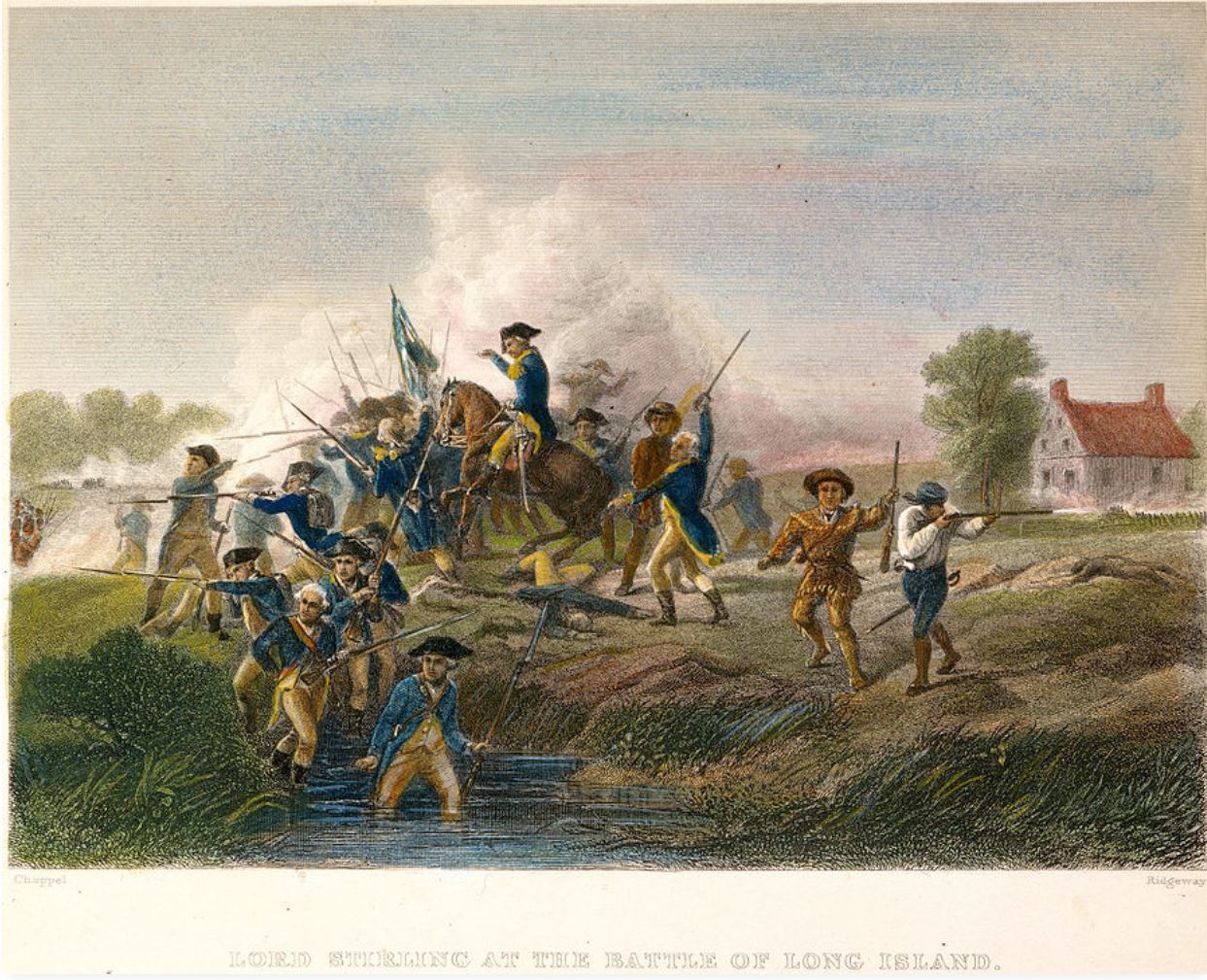 Colonel Stirling at the Battle of Long Island
Colonel Stirling at the Battle of Long Island
The Battle of Long Island
In July, British forces led by General Sir William Howe and his brother, Vice Admiral Richard Howe, began arriving off New York. Late the following month, the British commenced landing on Long Island. To block this movement, Washington deployed part of his army along the Guan Heights which ran east-west through the middle of the island. This saw Stirling's men form the right flank of the army as they held the westernmost part of the heights. Having thoroughly scouted the area, Howe discovered a gap in the heights to east at Jamaica Pass which was lightly defended. On August 27, he directed Major General James Grant to make a diversionary attack against the American right while the bulk of the army moved through Jamaica Pass and into the enemy's rear.
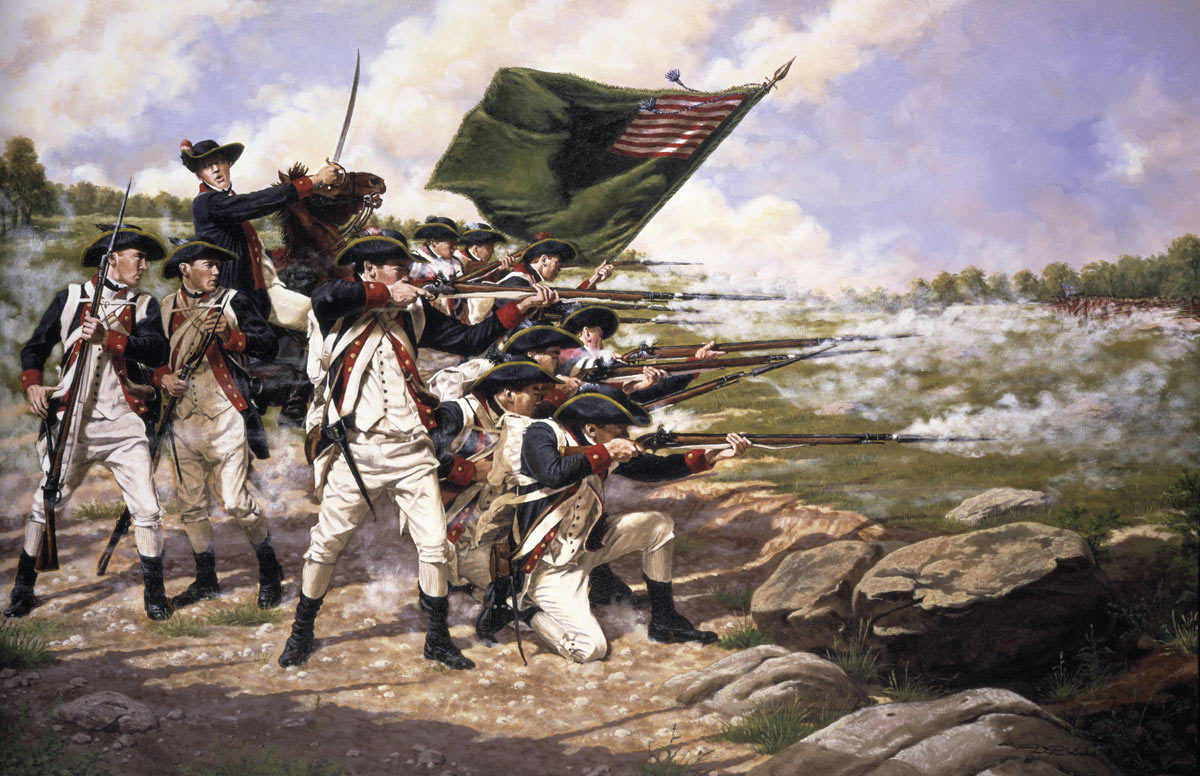 American Continental troops, Delaware Regiment, at the Battle of Long Island on 27th August 1776 in the American Revolutionary War: picture by Domenick D’Andrea
American Continental troops, Delaware Regiment, at the Battle of Long Island on 27th August 1776 in the American Revolutionary War: picture by Domenick D’Andrea
As the Battle of Long Island commenced, Stirling's men repeatedly turned back British and Hessian assaults on their position. Holding for four hours, his troops believed they were winning the engagement as they were unaware that Howe's flanking force had begun rolling up the American left. Around 11:00 AM, Stirling was compelled to begin falling back and was shocked to see British forces advancing to his left and rear. Ordering the bulk of his command to withdraw over Gowanus Creek to the final defensive line on Brooklyn Heights, Stirling and Major Mordecai Gist led a force of 260–270 Marylanders in a desperate rearguard action to cover the retreat. Twice attacking a force of over 2,000 men, this group succeeded delaying the enemy. In the fighting, all but a few were killed and Stirling was captured.
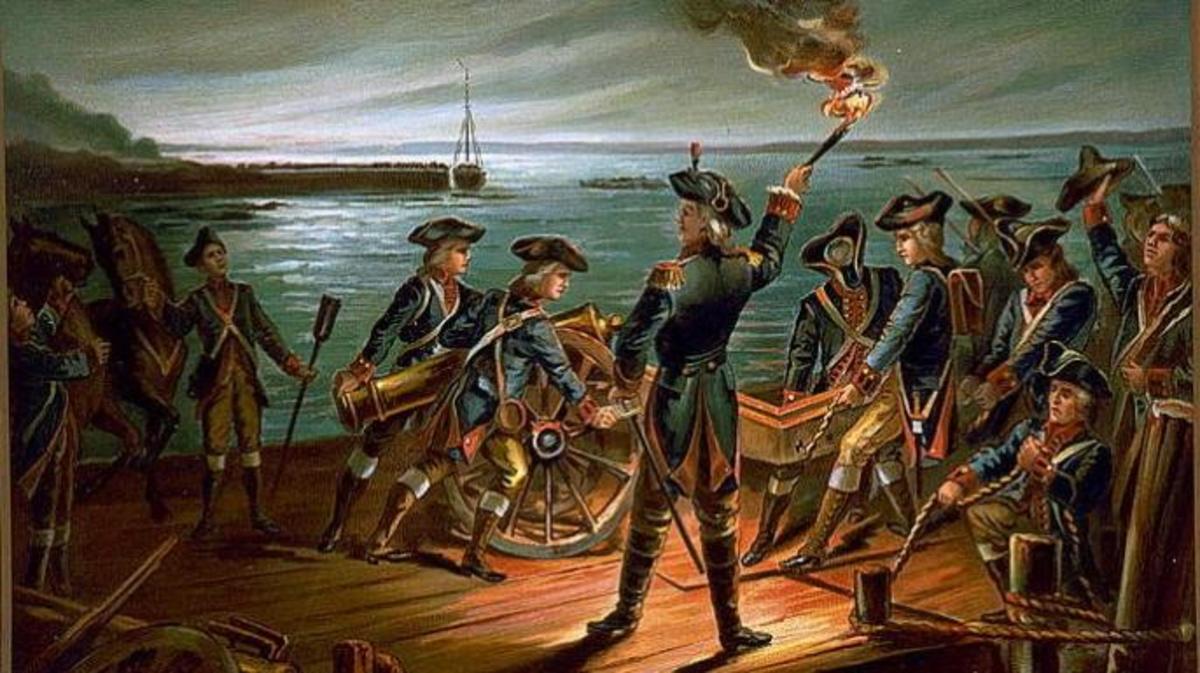 American Continental troops nighttime escape at the Battle of Long Island on 27th August 1776 in the American Revolutionary War
American Continental troops nighttime escape at the Battle of Long Island on 27th August 1776 in the American Revolutionary War
Stirling himself was taken prisoner but he had held the British forces occupied long enough to allow the main body of Washington’s army to escape to defensive positions at Brooklyn Heights.. Later, under the cover of a foggy night, Washington was able to get his remaining troops across the river to Manhattan.
Because of his actions at Long Island, one newspaper called Stirling “The bravest man in America”, and he was praised by both Washington and the British for his bravery and audacity. Later a commemorative monument was erected at the site of the military engagements and embattled retreat and the plot of land deeded to the State of Maryland near Prospect Park as a sacred parcel of “blood-soaked Maryland soil”.
Stirling was released in a prisoner exchange, in return for governor Montfort Browne, and promoted to the rank of major general. Stirling became one of Washington’s most able and trusted generals. Washington held him in such high regard that during the second Middlebrook encampment in 1779 (while Knox was in Pluckemin), he placed him, headquartered at the nearby Van Horne House, in command of the Continental Army for nearly two months, from 21 December 1778, even though he lived just six miles to the north in Basking Ridge.
Sterling Return to Command at the Battle of Trenton
Praised by both sides for his audacity and bravery, Stirling was paroled in New York City and later exchanged for Governor Montfort Browne who had been captured during the Battle of Nassau. Returning to the army later that year, Stirling led a brigade in Major General Nathanael Greene's division during the American victory at the Battle of Trenton on December 26. Moving into northern New Jersey, the army wintered at Morristown before assuming a position in the Watchung Mountains. In recognition of his performance the previous year, Stirling received a promotion to major general on February 19, 1777. That summer, Howe unsuccessfully attempted to bring Washington to battle in the area and engaged Stirling at the Battle of Short Hills on June 26. Overwhelmed, he was forced to fall back.
Later in the season, the British commenced moving against Philadelphia via the Chesapeake Bay. Marching south with the army, Stirling's division deployed behind Brandywine Creek as Washington attempted to block the road to Philadelphia. On September 11 at the Battle of Brandywine, Howe reprised his maneuver from Long Island by sending a force Hessians against the Americans' front while moving the majority of his command around Washington's right flank. Taken by surprise, Stirling, Sullivan, and Major General Adam Stephen attempted to shift their troops north to meet the new threat. Though somewhat successful, they were overwhelmed and the army forced to retreat.
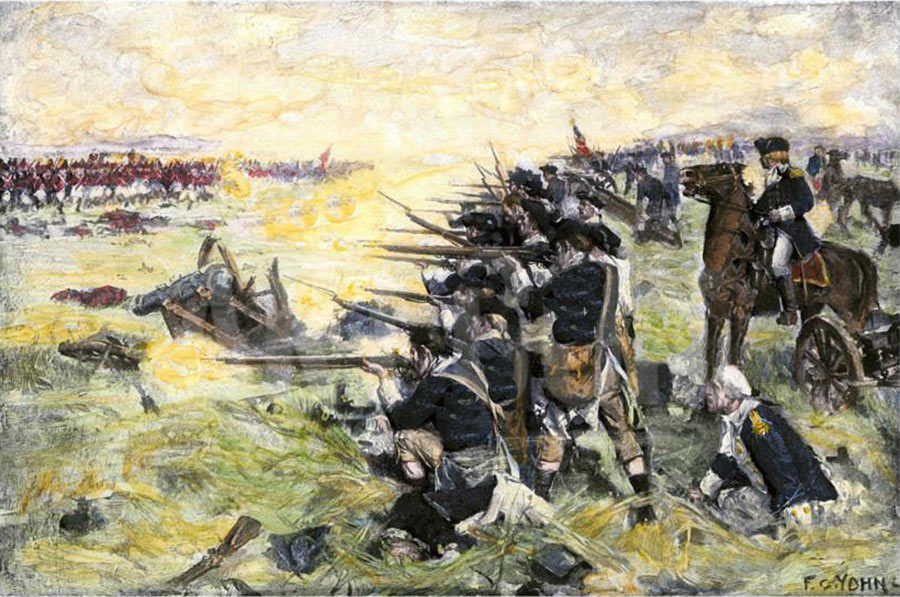 American troops at the Battle of Brandywine Creek on 11th September 1777 in the American Revolutionary War: picture by Frederick Coffay Yohn
American troops at the Battle of Brandywine Creek on 11th September 1777 in the American Revolutionary War: picture by Frederick Coffay Yohn
The defeat ultimately led to the loss of Philadelphia on September 26. In an attempt to dislodge the British, Washington planned an attack at Germantown for October 4. Employing a complex plan, American forces advanced in multiple columns while Stirling was tasked with commanding the army's reserve. As the Battle of Germantown developed, his troops entered fray and were unsuccessful in their attempts to storm a mansion known as Cliveden. Narrowly defeated in the fighting, the Americans withdrew before later moving into winter quarters at Valley Forge. While there, Stirling played a key role in disrupting attempts to unseat Washington during the Conway Cabal.
In June 1778, the newly-appointed British commander, General Sir Henry Clinton, commenced evacuating Philadelphia and moving his army north to New York. Pursued by Washington, the Americans brought the British to battle at Monmouth on the 28th. Active in the fighting, Stirling and his division repulsed attacks by Lieutenant General Lord Charles Cornwallis before counterattacking and driving the enemy back. Following the battle, Stirling and the rest of the army assumed positions around New York City. From this area, he supported Major Henry "Light Horse Harry" Lee's raid on Paulus Hook in August 1779. In January 1780, Stirling led an ineffective raid against British forces on Staten Island. Later that year, he sat on the board of senior officers that tried and convicted British spy Major John Andre.
In the late summer of 1781, Washington departed New York with the bulk of the army with the goal of trapping Cornwallis at Yorktown. Rather than accompany this movement, Stirling was selected to command those forces remaining in the region and maintain operations against Clinton. That October, he assumed command of the Northern Department with his headquarters at Albany. Long known for overindulging in food and drink, by this time he had come to suffer from severe gout and rheumatism. After spending much of his time developing plans to block a potential invasion from Canada, Stirling died on January 15, 1783 only months before the Treaty of Paris formally ended the war. His remains were returned to New York City and interred in the Churchyard of Trinity Church.
Stirling Manor
Back in the 1700’s the rich typically held their wealth in land. Alexander wasn’t any different. As Alexander chose Basking Ridge, the English Manor was one of the finest in America. . It was typical to have an estate built along a river, similar to Washington’s Mount Vernon. Alexander chose his area along the Black Brook and the Passaic River (which borders the Great Swamp today).
 One of the few artifacts found was this 1784 needlepoint from Katharine Wright depicting the Stirling Manor and “The Buildings”. The British architect John Edward Pryor began construction in 1761. Word was it took two years to complete.
One of the few artifacts found was this 1784 needlepoint from Katharine Wright depicting the Stirling Manor and “The Buildings”. The British architect John Edward Pryor began construction in 1761. Word was it took two years to complete.
In 1761 Lord Stirling had just returned from abroad after petitioning the House of Lords for his title he decided to build his estate. The tract of land was about seven hundred acres was inherited in 1752 from his father, James Alexander, who was also the surveyor-general of New Jersey.
The seat of Lord Stirling, called by the country-people ‘The Buildings,’ was two miles distant. Designed to imitate the residence of an English nobleman, it was unfinished when the war began. The stables, coach-houses, and other offices, ornamented with cupolas and gilded vanes, were built behind a large paved court behind the mansion. A large hall extended through the able stream called the Black River. A large hall extended through the centre of the house. On one side was a drawing-room with painted walls and stuccoed ceiling. Being taken there as a child, my imagination was struck with a style and splendor so different from all around. Notes: Mrs. Eliza Susan Morton Quincy, wife of Josiah Quincy of Boston who in her youth had a home near the Stirling Manor
The Winemaker
It was known that Stirling was an accomplished mathematician and loved astronomy and horse breeding, Stirling was a devoted student of wine making. Like Jefferson, Stirling dedicated a large portion of his estate to the growing of grapes to produce locally produced vintage wine. It was said that the grapes originated in Italy.
In 1767, the Royal Society of Arts awarded Lord Stirling a gold medal for accepting the society’s challenge to establish viticulture and winemaking in the North American colonies by cultivating 2,100 grape (V. vinifera) vines on his New Jersey estate.
General's Meet at Stirling Manor
The council of war met at Lord Stirling’s residence on May 2,1777. In attendance was George Washington, Nathaniel Greene, Henry Knox. They discussed a possible attack on New Brunswick, New Jersey but it was decided that the troops were not strong enough nor sufficiently trained to choose such course of action.
What became of the Stirling Manor?
Shortly after Alexander’s death in 1783 the estate was unoccupied. Numerous attempts to gain funds to maintain the house were petitioned to Congress to no avail. It was to be hoped that Lady Kitty visit after she moved to New York but she didn’t. After years, as its glories soon departed. Before the advent of the next century it was a scene of ruin. The drawing-room, with its stuccoed ceiling and decorations of goddesses and cupids, where Lord Stirling and his daughters sang hymns to the accompaniment of a little London spinet, still in existence, was in total disrepair. The tiled courtyard, where many a lordly coach, had rumbled, was broken up, and the Stirling gilt coach, itself a reminder of Sir Charles Grandison’s day, was a roosting-place for fowl. The entire estate became a dreary picture of neglect and ruin.
 This is a photo of the Lord Stirling Estate in 1911. The property encompassed over 200 acres. Published by the Temme Co., Newark, NJ, and was printed in Germany. Source: Rutgers University
This is a photo of the Lord Stirling Estate in 1911. The property encompassed over 200 acres. Published by the Temme Co., Newark, NJ, and was printed in Germany. Source: Rutgers University
Then in 1840, the estate changed hands and was remodeled in what is referred to as an Italianate architecture. The estate stayed as pictured until 1920 when a major fire destroyed the building. There is a home today on the original foundation. Each year during the Lord Stirling Festival in Basking Ridge, part of the original Stirling manor house foundation still exists under the house now occupying the site. On this day of the year, as part of the festival, the cellar is open to the public for tours. You might call it one of America’s first wine cellars.
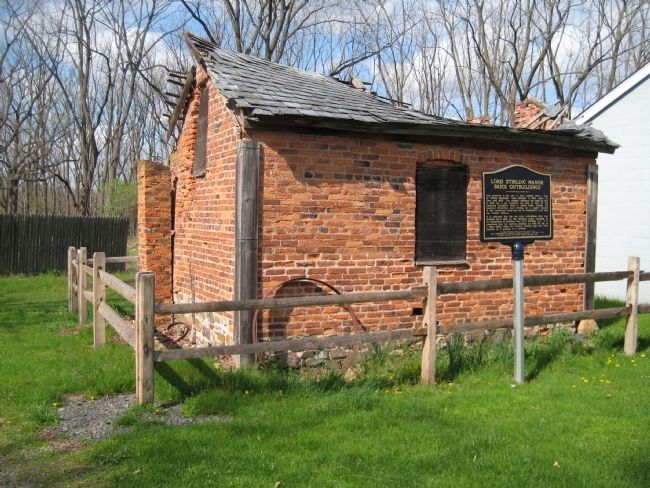 Lord Stirling Manor – Easterly Brick Outbuilding – Each is a 2 layer thick, rose brick structure, measuring 12 by 16 feet. The roofs are a low gable construction with slate shingles and are believed to be of a more recent period (19th century). ‘ The interior wood paneling and floors are in a decaying condition and have been extensively altered for storage purposes.
Lord Stirling Manor – Easterly Brick Outbuilding – Each is a 2 layer thick, rose brick structure, measuring 12 by 16 feet. The roofs are a low gable construction with slate shingles and are believed to be of a more recent period (19th century). ‘ The interior wood paneling and floors are in a decaying condition and have been extensively altered for storage purposes.
Two brick buildings are all that remain of the Lord Stirling/William Alexander estate. Research has established these were auxiliary buildings related to farm life (granary, farm office, perhaps used by domestic servants). Archeological digs are ongoing on site which is owned by the Somerset County Park Commission. Entered on State Register, 1976; National Register, 1977.
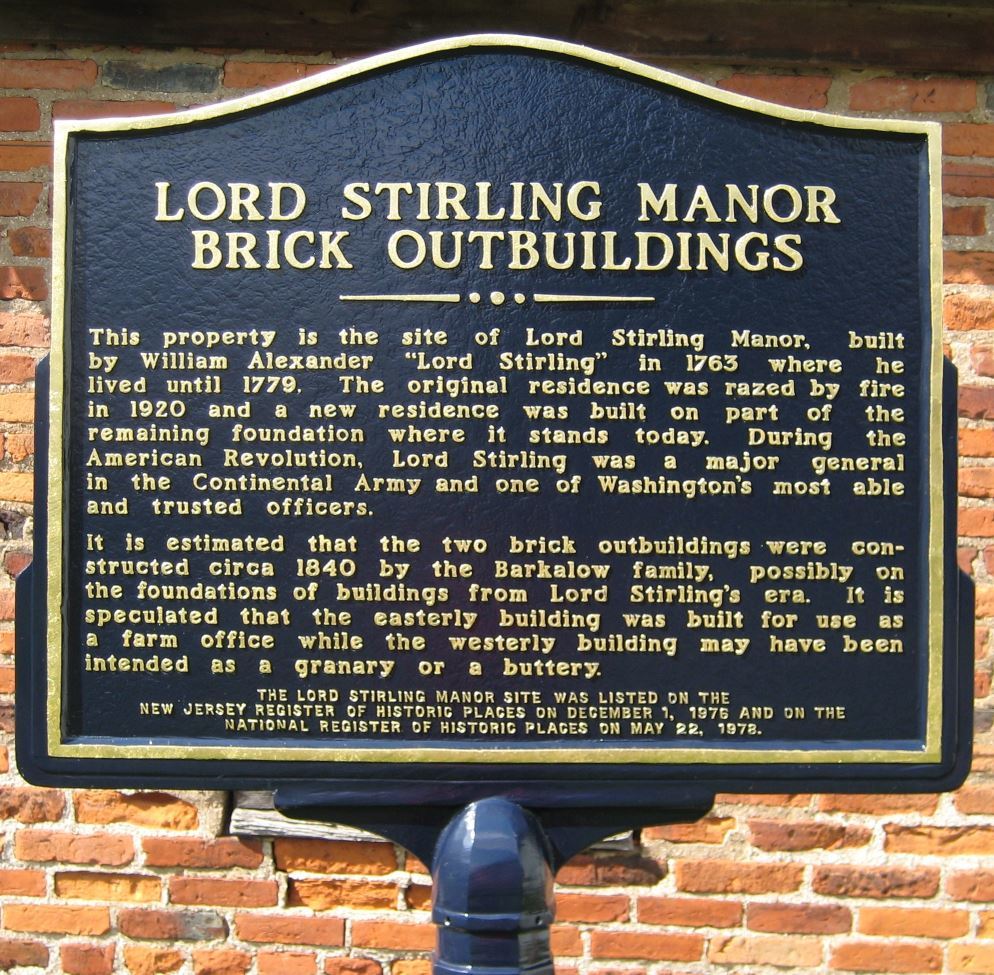 The Plaque
The Plaque
Final Days
Lord Stirling didn’t get to experience in the official end of the war in 1783. He died in Albany on January 15th, 1783 just months before the Treaty of Paris was signed.
This cache is one of "The American Revolution Geo~Trail" caches throughout New Jersey. These program geocaches are hidden at historic locations which have a connection to important New Jersey's American Revolutionary War history. To participate in the optional Geo-Trail, after you find the geocache, locate the secret code and record it into your passport which you will print from the Geo~Trail website. Information at njpatriots.org
 ”njpatriots.org"
”njpatriots.org"
The Northern New Jersey Cachers, NNJC is about promoting a quality caching experience in New Jersey. For information on The Northern New Jersey Cachers group you can visit: www.nnjc.org.
 nnjc.org & metrogathering.org, & njpatriots.org
nnjc.org & metrogathering.org, & njpatriots.org